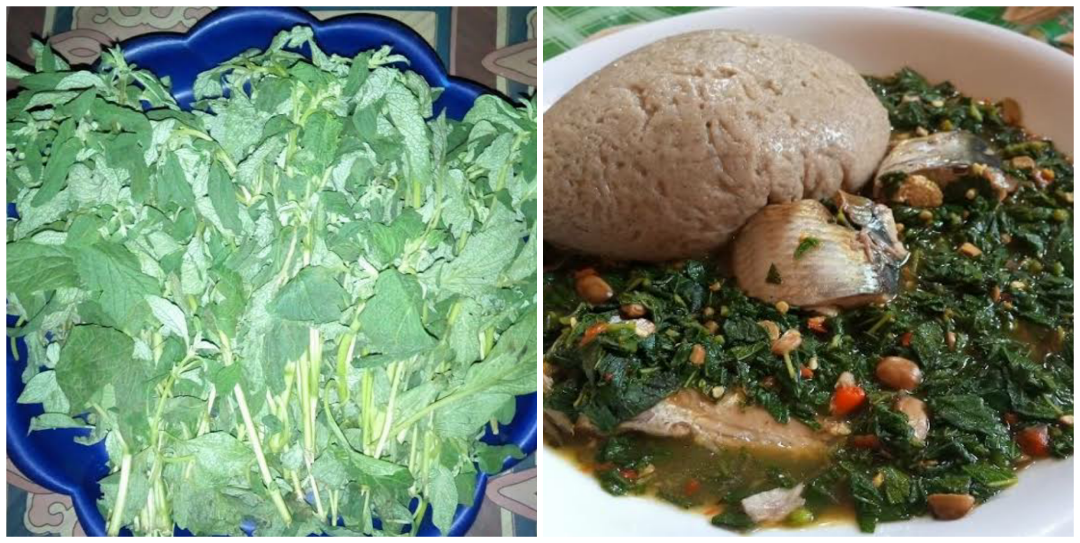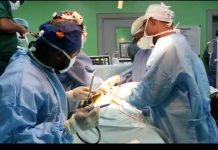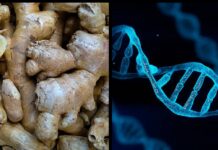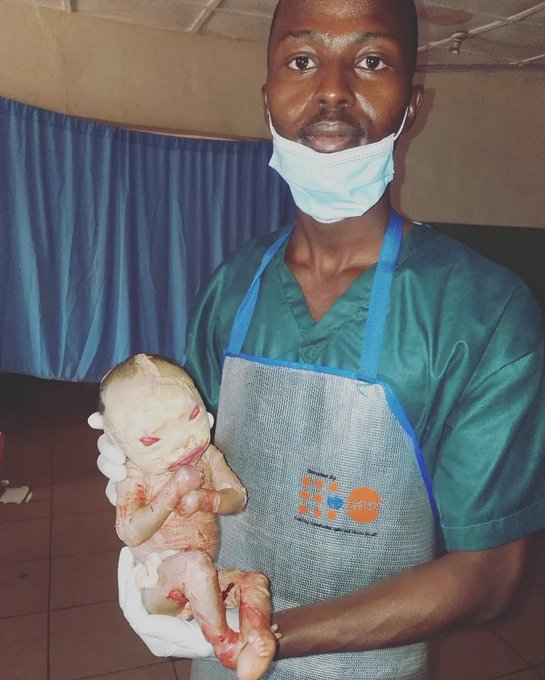Harlequin ichthyosis images: See the rare and real image of a baby born with HARLEQUIN ICHTHYOSIS ( HARLEQUIN BABY PHOTOS)
Welcome to www.nimedhealth.com.ng
A medical doctor, practicing in Nigeria, Dr Yabas, tweeted that he delivered a woman of a harlequin baby and he posted the pictures. The truth is, harlequin ichthyosis images are rare to see.
In his tweet:
‘The baby I delivered today via (EMCS) has a rare congenital anomaly.
For the medics : This is called “Harlequin ichthyosis” (Harlequin baby)
Cause: ABCA12 gene, Autosomal recessive.’
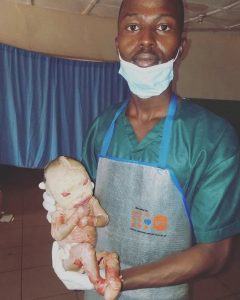
Children with Harlequin Ichthyosis hardly survive but their are reported cases of Harlequin babies who have celebrated their 15 years birthday.
What is Harlequin Ichthyosis?
Did you know 😲??
Harlequin ichthyosis is a severe genetic disorder that affects the skin. Infants with this condition are born prematurely with very hard, thick skin covering most of their bodies. The skin forms large, diamond-shaped plates that are separated by deep cracks (fissures). These skin abnormalities affect the shape of the eyelids, nose, mouth, and ears, and limit movement of the arms and legs. Restricted movement of the chest can lead to breathing difficulties and respiratory failure in babies with harlequin ichthyosis. Affected infants also have feeding problems.
The skin normally forms a protective barrier between the body and its surrounding environment. The skin abnormalities associated with harlequin ichthyosis disrupt this barrier, making it difficult for affected infants to control water loss, regulate their body temperature, and fight infections. Infants with harlequin ichthyosis often experience an excessive loss of fluids (dehydration) and develop life-threatening infections in the first few weeks of life.
Following the newborn period, the hard, skin plates are shed and the skin develops widespread scales and redness. They may also have cleft palate problems.
It used to be very rare for affected infants to survive the newborn period. However, with intensive medical support and improved treatment, babies with this disorder now have a better chance of living into childhood and early adulthood.
Harlequin ichthyosis is caused by changes (mutations) in the ABCA12 gene, which gives instructions for making a protein that is necessary for skin cells to develop normally. It plays a key role in the transport of fats (lipids) to most superficial layer of the skin (epidermis), creating an effective skin barrier.
© Lu Wixzzy
This article is the intelletual property of www.nimedhealth.com.ng







